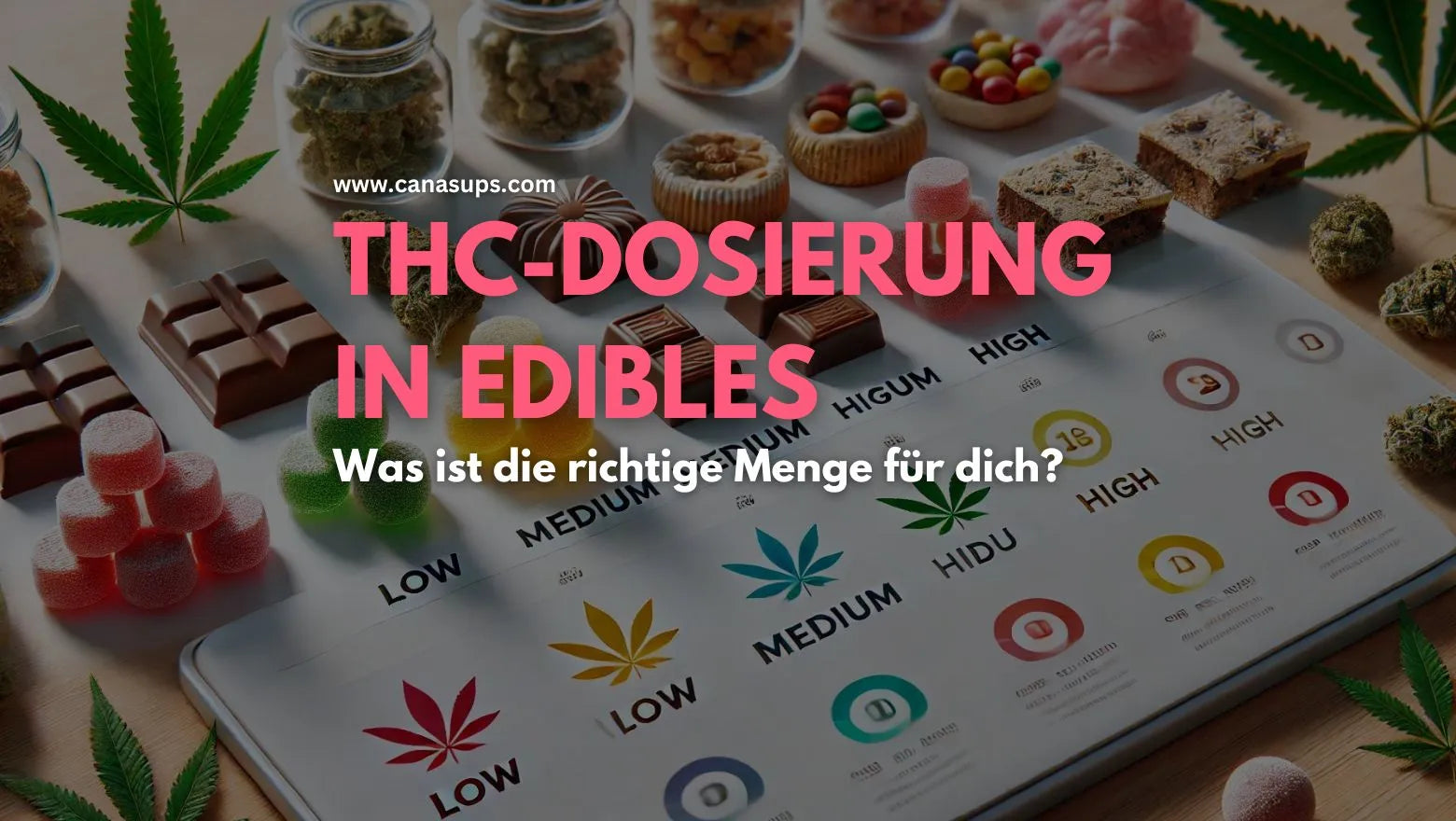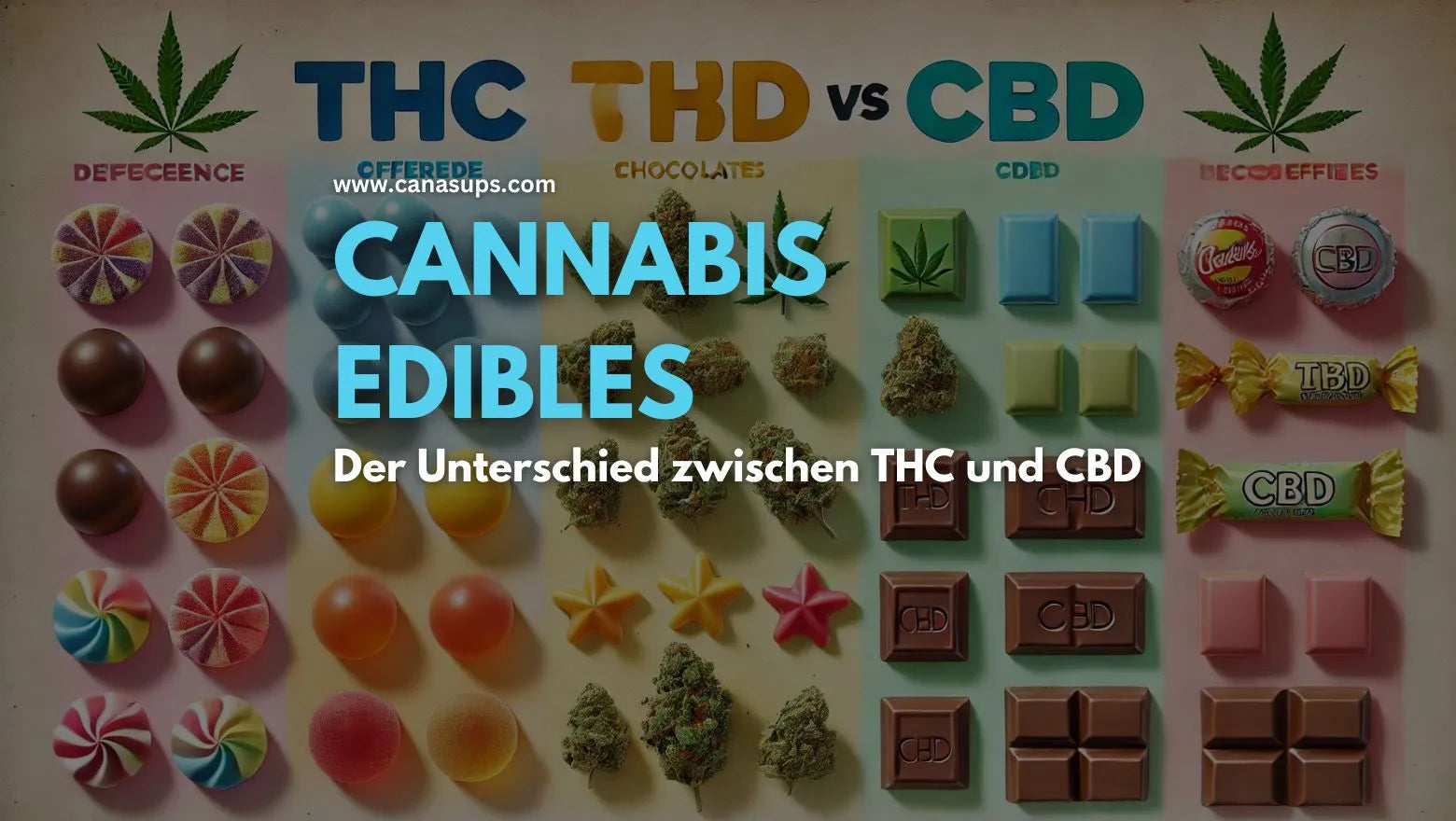When it comes to consuming cannabis, there are many different methods, each offering different effects and experiences. One of the most striking differences is the duration of the effects. While smoking or vaping cannabis offers a relatively quick but short-lived effect, cannabis edibles are known to have a much longer and often more intense effect. But why is this? In this article, we delve into the science behind the long-lasting effects of cannabis edibles.
Table of contents: |
How cannabis enters the body: The difference between edibles and smoking
The main difference between cannabis edibles and smoking cannabis lies in the way the active ingredients—particularly THC (tetrahydrocannabinol) —are absorbed and processed by the body.
Intake when smoking or vaping
When smoked or vaporized, THC enters the lungs directly. From there, it is quickly absorbed into the bloodstream and reaches the brain within minutes. This rapid absorption results in a rapid onset of effects, which, however, usually only last for a short time (about 1 to 3 hours). Because THC is minimally processed by the digestive tract or liver when smoked or vaporized, it is absorbed into the bloodstream in its original form.
Recording at Edibles
With cannabis edibles, absorption works quite differently. Here, the THC is absorbed through the digestive tract, which involves a much slower and more complex processing process. After the edible is consumed, the THC begins its journey through the stomach and small intestine before reaching the liver. This process typically takes between 30 minutes and 2 hours , which is why the effects of edibles are delayed.
In the liver, THC is converted into a more potent substance known as 11-hydroxy-THC . This form of THC is significantly more potent than the original delta-9-THC released when smoked. The result is a stronger and longer-lasting effect, often lasting up to 6 hours or more .
The role of 11-hydroxy-THC
The key to the prolonged effects of cannabis edibles lies in the liver's conversion of THC to 11-hydroxy-THC. This conversion not only makes the drug more potent but also more effective at crossing the blood-brain barrier, allowing it to reach the brain more easily.
Differences in effect:
- Delta-9-THC (absorbed when smoked): Is quickly processed by the body, providing a relatively short but intense psychoactive effect.
- 11-Hydroxy-THC (taken in edibles): Is more potent and penetrates the brain more efficiently, resulting in a more intense and longer-lasting psychoactive effect.
Studies have shown that 11-hydroxy-THC has a higher psychoactive potency, which explains why the effects of edibles are often perceived as more intense than smoking or vaping cannabis.
Why the effect lasts so long
The long-lasting effects of cannabis edibles can be attributed to several factors:
1. Slow digestion and metabolism
The digestion process takes longer than inhaling smoke. Once the THC is absorbed in the stomach and small intestine, it takes time to reach the liver, where it is converted into 11-hydroxy-THC. This entire process is relatively slow, contributing to the delayed onset of effects.
2. Storage in body fat
THC is fat-soluble, meaning it accumulates in the body's fat cells. In edibles, some of the THC can be temporarily stored in fat tissue and then slowly released. This can lead to a prolonged effect as the THC gradually reenters the bloodstream.
3. Continuous release of 11-hydroxy-THC
Because 11-hydroxy-THC binds more strongly to the cannabinoid receptors in the brain, it remains active longer. This ensures that the psychoactive effects of edibles often last for several hours, in contrast to the relatively rapid wear-off period of smoking.
Differences between people
The effects and duration of cannabis edibles can vary from person to person. This is due to a number of factors, including:
- Metabolism : People with a faster metabolism may process THC faster, while others may take longer.
- Body weight and fat content : Because THC is fat-soluble, body composition can affect how long THC remains active in the body.
- Tolerance : Long-term cannabis users often have a higher tolerance to THC, meaning they may need higher doses to achieve the same effect.
- Eating habits : Eating an edible on an empty stomach may result in a faster effect, while consuming it after a meal may delay absorption.
Be careful when dosing edibles
Due to the potentially intense and long-lasting effects of edibles, it's especially important to be careful with dosage, especially for beginners. A typical dose for beginners is 2.5 mg to 5 mg of THC , while experienced users may be able to tolerate 10 mg or more . Because the onset of effects is delayed, users should wait at least 2 hours before deciding whether to consume more.
Conclusion: The science behind the long-lasting effects of edibles
The long-lasting effects of cannabis edibles are due to the unique processing pathway of THC in the body. Compared to smoking, where THC quickly reaches the brain and is quickly broken down, THC in edibles undergoes a much more complex digestion and conversion process. The formation of 11-hydroxy-THC in the liver and the slower release of THC from fatty tissue lead to a more intense and longer-lasting effect. Therefore, cannabis edibles are an excellent choice for those seeking a long-lasting experience, but should be dosed with caution to avoid overdose.











